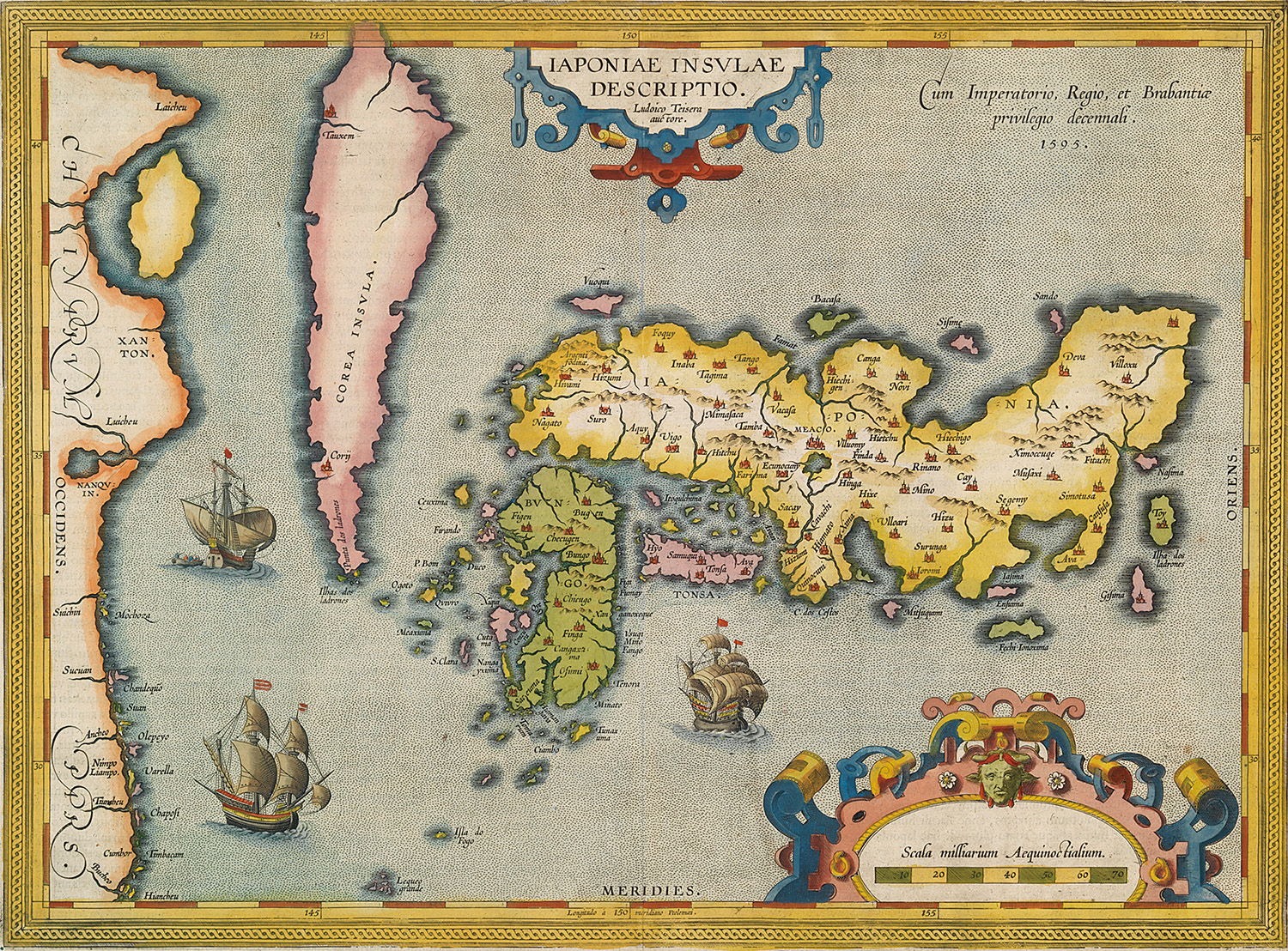The transformation of Edo from a mosquito-infested fishing village to seat of power and cultural center has endlessly fascinated lovers of history. After the imperial capital Kyoto fell to military rule in 1185, ensuing battles for power saw the capital move to Kamakura, then Muromachi, Azuchi, and Momoyama before settling in Edo (modern-day Tokyo), the headquarters of shogun Tokugawa Ieyasu (1543-1616) and his descendents, in 1603. In the stability that followed, Edo swelled to over a million inhabitants by the early 1700s, about double the size of London at the same time. "Edo and Kyo: The Townscape in Asia" contains more than 160 items, among them paintings, maps, and costumes, that tell the story of this most enigmatic of cities.
In order to legitimize Tokugawa rule, Edo needed a compelling visible identity. As several maps on display show, East Asian cities were typically modeled on Chinese prototypes, characterized by a wall-bound grid of streets centered on a north-south oriented palace. Nara and Kyoto approximated this standard, but being a military capital, Edo was centered on a towering castle rather than a palace. Military regalia, architectural plans, Buddhist scriptures and a recently discovered curtain from the Momijiyama mausoleum hint at the elaborate material and ritual culture adopted by the Tokugawa shoguns.
The shogunate's isolationist policy is often emphasized at the expense of the archipelago's maritime history, which saw ships deployed for trade, plunder and religious and diplomatic missions. Maps of the world circulated as paintings and woodblock prints. One of two pairs of folding screens from the beginning of the 1600s in which a map of the world is bracketed by cityscapes of important ports: Aden, Stockholm, Antwerp, Hamburg, Genoa, Seville, Lisbon, Venice, Bergen, Prague, Goa and Mexico City. Below sprawls a "Southern Land," an amalgam of Australia and Antarctica, virtually free of named landmarks. One of three of its kind, the screen pair was probably based on a map published in the early 1600s.



















With your current subscription plan you can comment on stories. However, before writing your first comment, please create a display name in the Profile section of your subscriber account page.